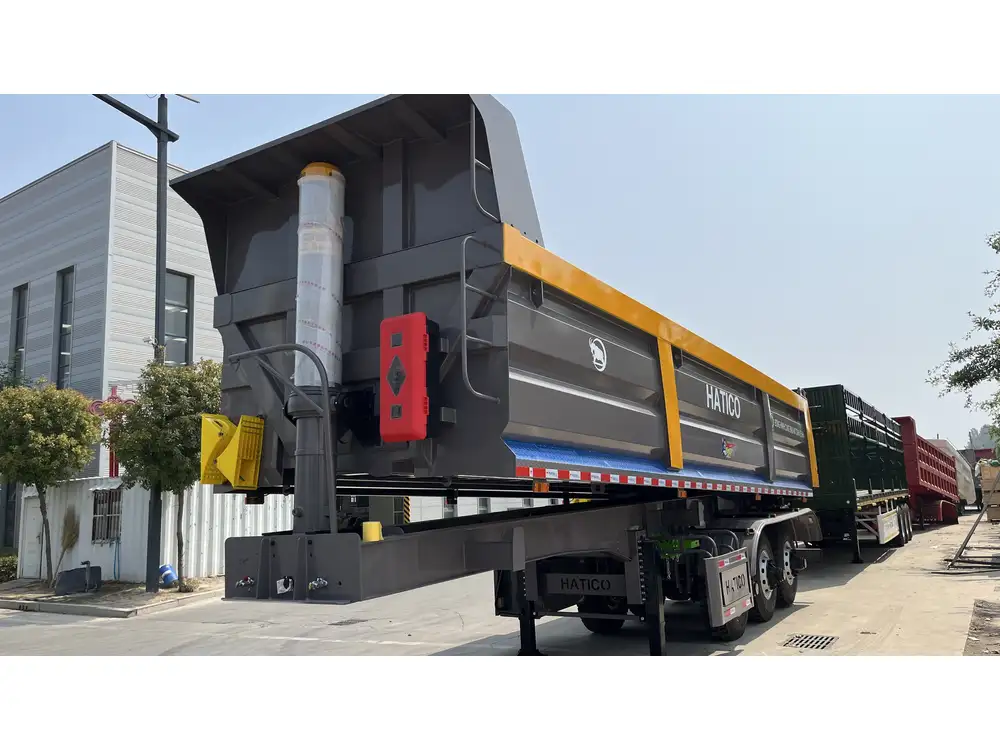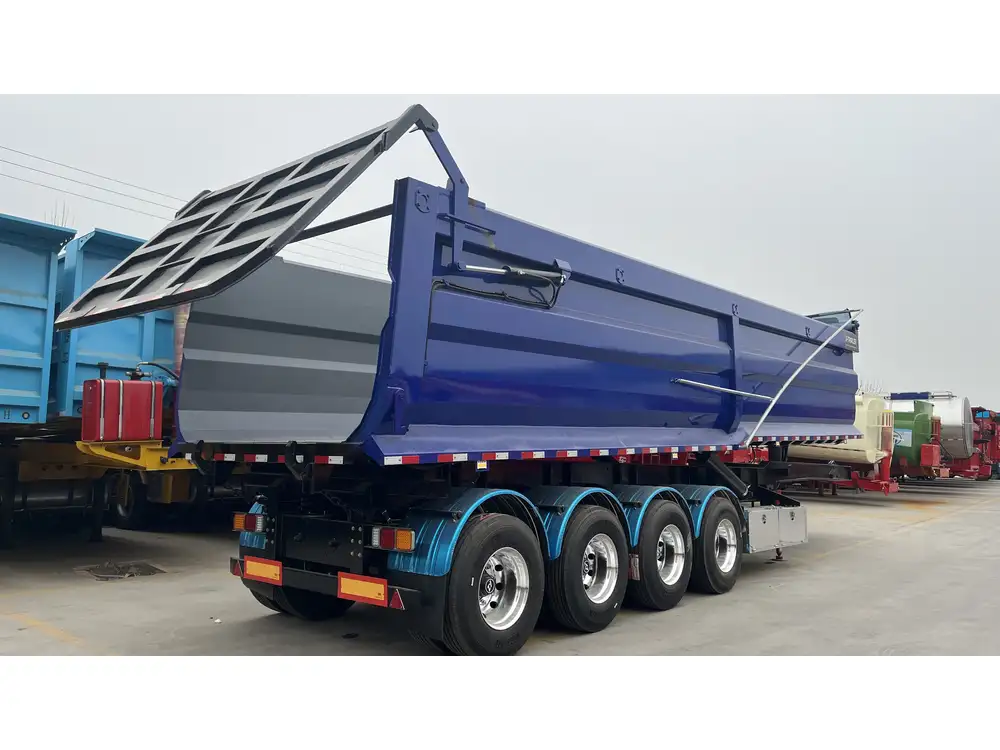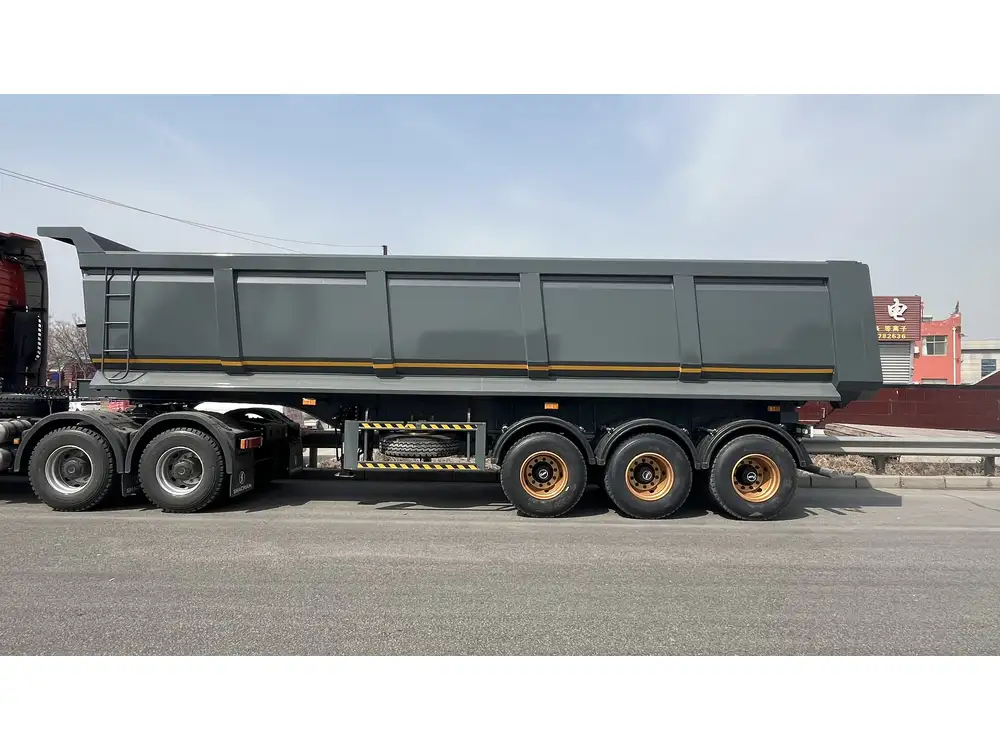When it comes to the transport industry, one of the most fundamental aspects is the dimensions of transport vehicles. Specifically, the length of a semi truck and trailer can drastically impact logistics, load capacities, and operational efficiency. In this guide, we will explore the standard dimensions, variations, and considerations around the length of semi trucks and trailers. This knowledge is essential for manufacturers, shippers, and anyone involved in transportation solutions.
The Standard Length of a Semi Truck and Trailer
The typical length of a semi truck combined with a trailer can vary depending on several factors, including jurisdictional regulations, the specific type of trailer, and payload requirements. However, a standard semi truck and trailer combination generally measures approximately 70 to 80 feet in length.
| Component | Standard Length |
|---|---|
| Semi Truck | 20 to 30 feet |
| Trailer | 48 to 53 feet |
| Total Length | 70 to 80 feet |
Breakdown of Length Components

1. The Semi Truck
The semi truck, which is also known as the tractor or cab, typically measures between 20 to 30 feet in length. This measurement includes the entire structure from the front bumper to the rear. The dimensions may vary based on the model and configuration.
2. The Trailer
The trailer, where goods are carried, comes in various lengths, with the 48 to 53 feet length range being the most prevalent in the freight industry. The length of the trailer determines how much cargo can be hauled, thus affecting profitability and efficiency.
Types of Trailers and Their Lengths
Different types of trailers are utilized for specific cargo and operational requirements. Below is a list of common trailers and their associated lengths:
| Trailer Type | Standard Length |
|---|---|
| Flatbed Trailer | 48 to 53 feet |
| Refrigerated Trailers | 48 to 53 feet |
| Dry Van Trailers | 48 to 53 feet |
| Lowboy Trailers | 20 to 29 feet |
| Car Hauler Trailers | 40 to 53 feet |

Flatbed Trailers
Flatbed trailers typically measure 48 to 53 feet and are used for transporting oversized items that do not fit into standard enclosed spaces.
Refrigerated Trailers
Reefer trailers, or refrigerated units, maintain optimal temperature for perishable items. These trailers also generally fall within the 48 to 53 feet range.
Dry Van Trailers
Dry van trailers are enclosed units used for transporting a variety of goods. Their dimensions largely match those of flatbed trailers, maintaining the 48 to 53 feet length range.

Lowboy Trailers
Lowboy trailers are specifically designed for heavy machinery and oversized equipment. They usually range from 20 to 29 feet in length, making them ideal for heavy transport applications.
Car Hauler Trailers
When it comes to transporting vehicles, car hauler trailers are widely used. They generally have lengths spanning from 40 to 53 feet.
Legal Length Regulations
Understanding legal length regulations is vital for transport operators to avoid fines and ensure compliance with federal and state laws. In the United States, federal regulations set various maximum lengths for semi-trucks and trailers which must be adhered to:
- Single Vehicle Length: The maximum length of a semitrailer in a single vehicle configuration is 48 feet.
- Combination Vehicle Length: The maximum length for multiple vehicles, including the tractor and trailer combo, is 65 feet.
- A Provisions for Longer Trailers: Some states allow longer combinations, especially with specific permits, extending lengths up to 75 to 80 feet in certain jurisdictions.

Important Note on State Variations
Each state may have varying regulations, particularly in terms of additional trailers, such as doubles or triples, which can exceed the federal limits. Therefore, it’s essential for operators to research individual state laws pertinent to the routes they travel.
Impact of Length on Load Capacity
Weight Distribution and Load Limits
Longer trailers tend to have a greater load capacity, but they also require careful weight distribution to comply with weight limits and ensure vehicle safety. Less than optimal load distribution can lead to issues such as:
- Increased Tire Wear: Uneven weight distribution can cause tires to wear out prematurely, affecting running costs.
- Stability During Transit: Longer trailers, if not loaded correctly, can sway or become unstable during transport, creating a safety hazard.
- Increased Fuel Consumption: Overly long trailers can lead to higher aerodynamic drag, increasing fuel consumption significantly.

Load Types and Their Compatibility with Trailer Lengths
The type of cargo that needs to be transported can also influence trailer choice and length. Different load types may require specific trailer designs, loading configurations, and length considerations. Here’s a detailed comparison:
| Load Type | Recommended Trailer Length |
|---|---|
| Palletized Freight | 48 to 53 feet |
| Heavy Machinery | 20 to 29 feet (Lowboy) |
| Vehicles | 40 to 53 feet (Car Hauler) |
| Long Equipment | 53 feet (Flatbed) |
| Perishables | 48 to 53 feet (Reefer) |
Future Trends Influencing Trailer Dimensions
As industries evolve and the demand for transportation shifts, new trends are emerging that affect the lengths of semi trucks and trailers:
1. Advanced Technology Innovations
Innovative technologies, such as automated monitoring systems, centralized tracking, and fleet management software, are allowing for optimized loads and better compliance with weight limits, thereby influencing trailer dimensions.

2. Shifts to Sustainability
With the increasing focus on sustainability, shorter trailers might be favored for urban deliveries where maneuverability is essential. This reflects an emerging trend toward optimizing transport efficiency within constrained city environments.
3. Regulatory Changes
Changing regulations at state and federal levels may also impact the lengths manufacturers can produce. Adapting and anticipating these changes is vital for maintaining compliance and operational effectiveness.
Conclusion: The Importance of Knowing the Standard Length of Semi Trucks and Trailers
Understanding the standard length of a semi truck and trailer is critical for effective transportation planning. From ensuring compliance with regulations to optimizing load capacity and enhancing operational efficiency, the dimensions play a fundamental role in the transport industry.
It is essential for manufacturers, shippers, and logistics managers to stay informed about varying lengths, types of trailers, and the implications of these dimensions on both safety and efficiency. As industry trends evolve, staying ahead of the curve will provide competitive advantages while ensuring that transportation solutions meet the ever-changing needs of the market.
In summation, a well-informed understanding of semi truck and trailer lengths not only helps avoid potential legal pitfalls but also ensures a streamlined, cost-effective operation in the competitive landscape of logistics and transportation.



